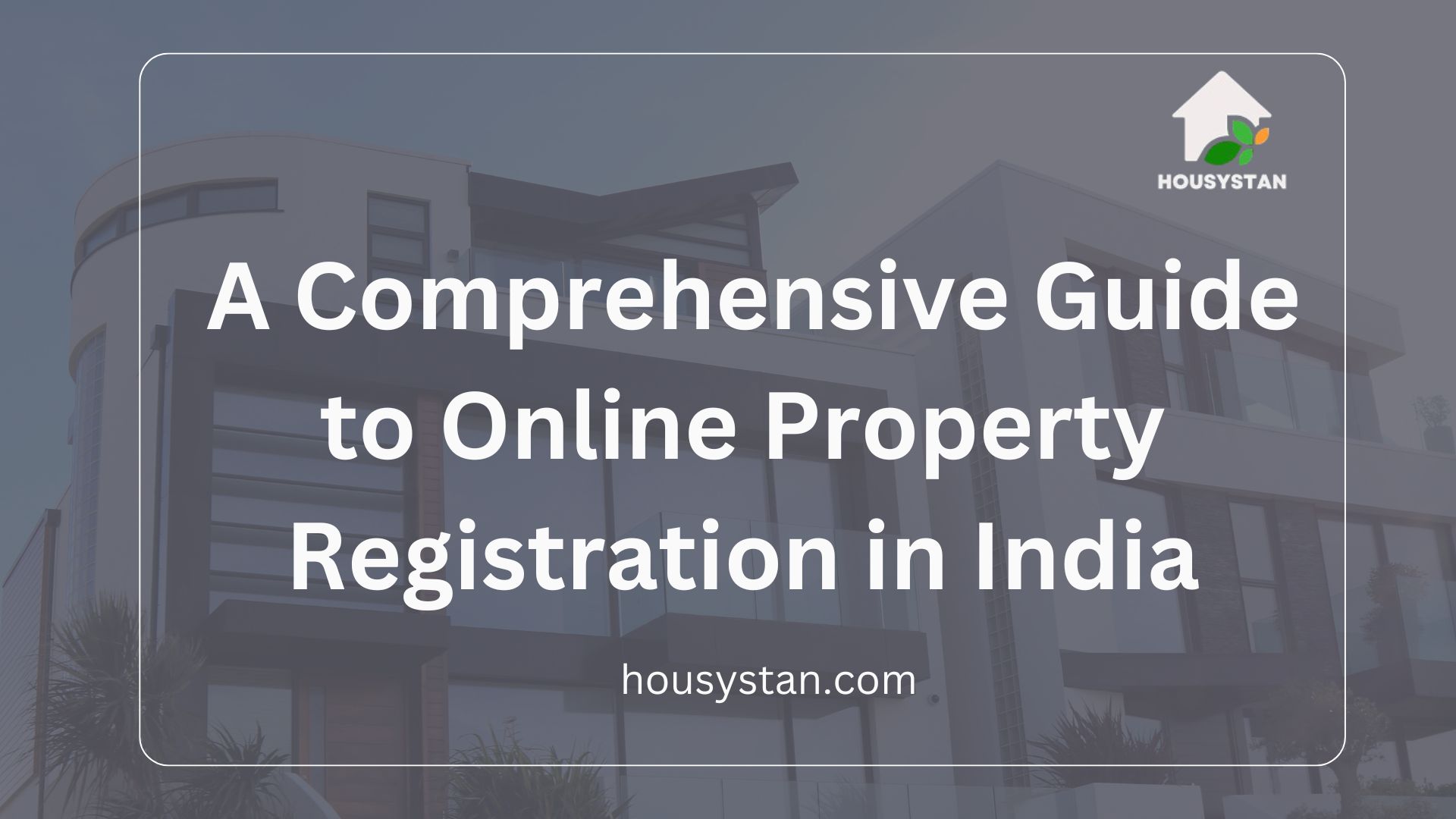A Comprehensive Guide to Online Property Registration in India
Read latest blogs and articles from Housystan

The Information mentioned here was last updated on:
11/12/2025A Comprehensive Guide to Online Property Registration in India
Navigating the process of property registration can often feel like diving into a labyrinth. However, the advent of digital platforms has transformed this experience, minimizing the hassle and making it more straightforward than ever before. In India, online property registration is designed to streamline transactions, enhance transparency, and reduce fraudulent activities. This guide will walk you through the process, highlighting key steps and providing useful tips to ensure a smooth registration experience.
What is Online Property Registration?
- Verified Tenants/Buyers
- Unlimited Property Listing
- Zero subscription/charges fee
Online property registration in India refers to the process of registering property deeds and titles using internet-based platforms provided by respective state governments. This digital approach not only simplifies property transactions but also grants legitimacy, ensuring that property rights are legally documented.
Benefits of Online Registration
- Convenience: Eliminates the need for multiple visits to government offices.
- Time-saving: Quick process without the traditional delays.
- Transparency: Reduces the chances of corruption and errors.
- Accessibility: Allows access to property records from anywhere.
Understanding the Necessary Documents
Before diving into the registration process, it’s crucial to gather all the necessary documents. Here’s what you typically need:
- Sale Deed: Proof of property ownership transfer.
- Identity Proof: Aadhar card, PAN card, or passport.
- Address Proof: Utility bills or bank statements.
- Encumbrance Certificate: Clear history of the property, showing it's free from legal liabilities.
- Power of Attorney: If applicable, for representatives handling transactions on your behalf.
Steps for Online Property Registration
Each state in India may have its unique procedure, but there are common steps applicable nationwide. Here’s a simplified guide:
1. Visit the Official Website:
- Navigate to your state government's official registration website. A quick Google search with the state's name followed by "property registration" should direct you to the right portal.
2. Create an Account:
- Register with your details, like name, phone number, and email ID. An OTP (One Time Password) might be sent for verification.
3. Fill in the Required Information:
- Enter property details and personal information in the online application form. Ensure accuracy to avoid discrepancies.
4. Calculate Stamp Duty and Registration Fees:
- Use the online calculator available on the portal. Fees vary by state, location, and property value.
5. Online Payment:
- Payments are made via net banking or through the integrated payment gateways. Keep transaction receipts for records.
6. Upload Required Documents:
- Scan and upload all necessary documents in the prescribed formats the website mentions.
7. Fix an Appointment:
- Choose a convenient date and time for your document verification at the Sub-Registrar's office.
8. Visit the Sub-Registrar Office:
- On the appointed date, visit the office for physical verification. Carry original documents for thorough inspection.
9. Biometric Verification and Signatures:
- Complete the biometric verification and sign the documents to finalize the registration.
10. Receive Registration Confirmation:
- After successful verification, receive confirmation and a copy of the registered deed.
- Ensure Data Privacy: Always use secure internet connections when accessing and filling out online forms.
- Correct Errors Promptly: If discrepancies arise during data entry, rectify them immediately using the amendment facility on the website.
- Regular Updates: Keep track of new announcements or changes in the registration process through the official site.
Each portal provides a user-friendly interface with instructions and FAQs to assist users throughout the process.
Common Challenges and Solutions
- Technical Glitches: Address issues by clearing browser caches or switching to a different browser. If persistent, reach out to helpline numbers available on the portal.
- Document Discrepancies: Double-check all information entered and cross-verify with original documents before submission.
- Missed Appointments: Rescheduling is possible through the online portal, but it's paramount to adhere to timelines to avoid legal complications.
Future of Property Registration in India
The digital shift in property registration is part of a broader movement towards an e-governance model, aimed at making public services more accessible and efficient. With continuous advancements in technology and infrastructure, the future of online property registration looks promising, potentially integrating AI and blockchain technologies to further augment security and efficiency.
The Indian government’s persistent efforts in promoting digital platforms are transforming how property transactions are conducted, reflecting a step towards a more modern and inclusive system. By understanding and adapting to these processes, property buyers and sellers can navigate the real estate market with ease and confidence.